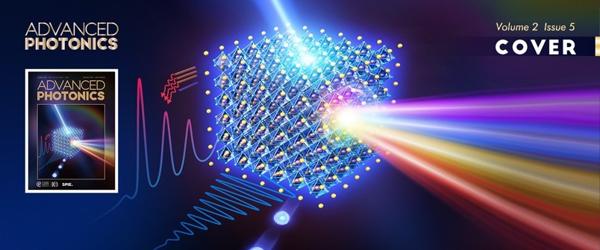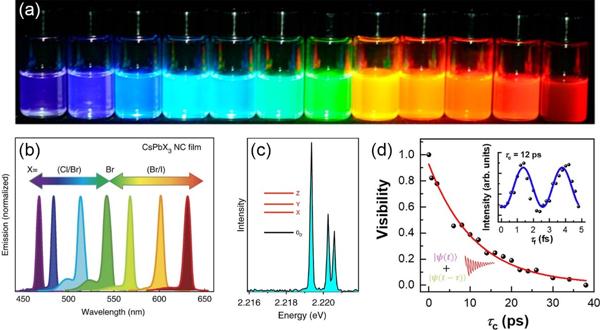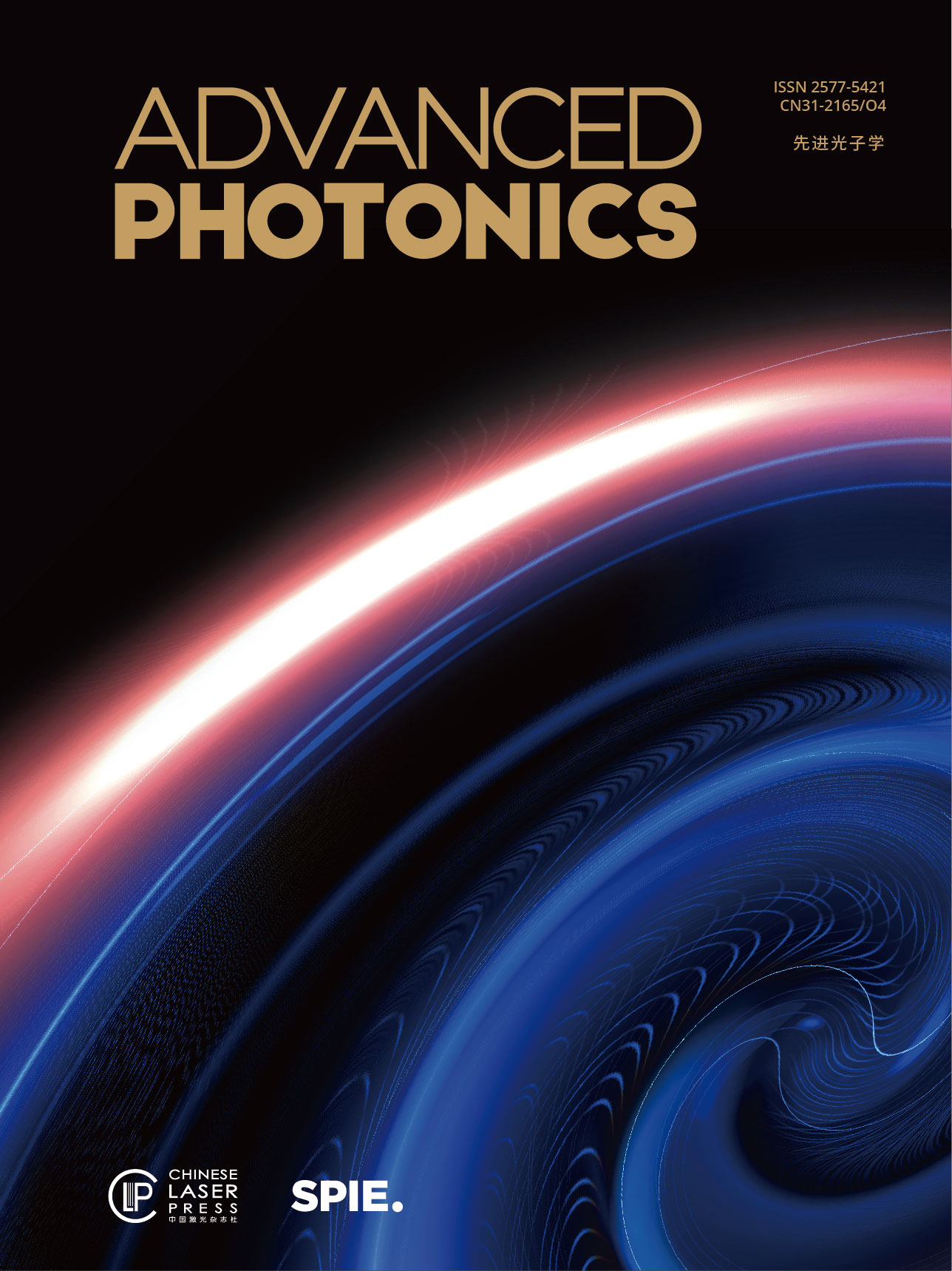As a novel type of low-dimensional semiconductor perovskite nanocrystals (NCs) can possess a fluorescent quantum yield of about 100% with size- and composition-tunable emission covering the broad spectral range from the near-UV to the near-infrared.
In a review paper published in Advanced Photonics, entitled "Optical studies of semiconductor perovskite nanocrystals for classical optoelectronic applications and quantum information technologies: a review", Prof. Xiaoyong Wang' group from Nanjing University summarize recent progress made in the optical studies of ensemble and single perovskite NCs. The mentioned review is selected as the On the Cover of Advanced Photonics (Vol.2, Iss.5).

Figure 1 On the Cover of Advanced Photonics (Vol.2, Iss.5)
At the ensemble level, the carrier relaxation and recombination dynamics, as well as the charge transport and extraction processes, can be routinely probed by the time-resolved photoluminescence (PL) and transient absorption optical techniques. Under both one- and multiple-photon excitations, low-threshold amplified spontaneous emission has been realized in perovskite NC ensembles, whose highly-ordered superlattices can additionally reveal the novel optical effect of superfluorescence.
At the single-particle level, the perovskite NCs can emit single photons with suppressed PL blinking and spectral diffusion as dictated by the quantum confinement and defect tolerance features, thus allowing the observation of stable exciton fine energy-level structures. The ultranarrow PL linewidth obtained from the fine-structured emission states of a single perovskite NC can be utilized to prepare indistinguishable photons, while the quantum interference measurement performed on the fine-structured absorption states implies the possibility of coherently manipulating the exciton wavefunctions.
Optical studies of perovskite NC ensembles are surely helpful in guiding their enhanced performance in relevant optoelectronic devices, with the single-particle characterization being equally important in advancing single perovskite NCs into the exciting regime of quantum information technologies. In this sense, the perovskite NCs are unique in that they are carrying a hybrid feature of classical and quantum optics, which will surely attract great research attention from both fundamental studies and practical applications for their wide development in future works.

Figure 2. (a) Optical images of solution CsPbX3 NCs with varying halide compositions under the excitation of an UV lamp. (b) PL spectra of amplified spontaneous emission measured for film CsPbX3 NCs with different halide compositions. (c) Band-edge exciton fine structures of a single FAPbBr3 NC. (d) Quantum interference measurement for a single CsPbI3 NC.


